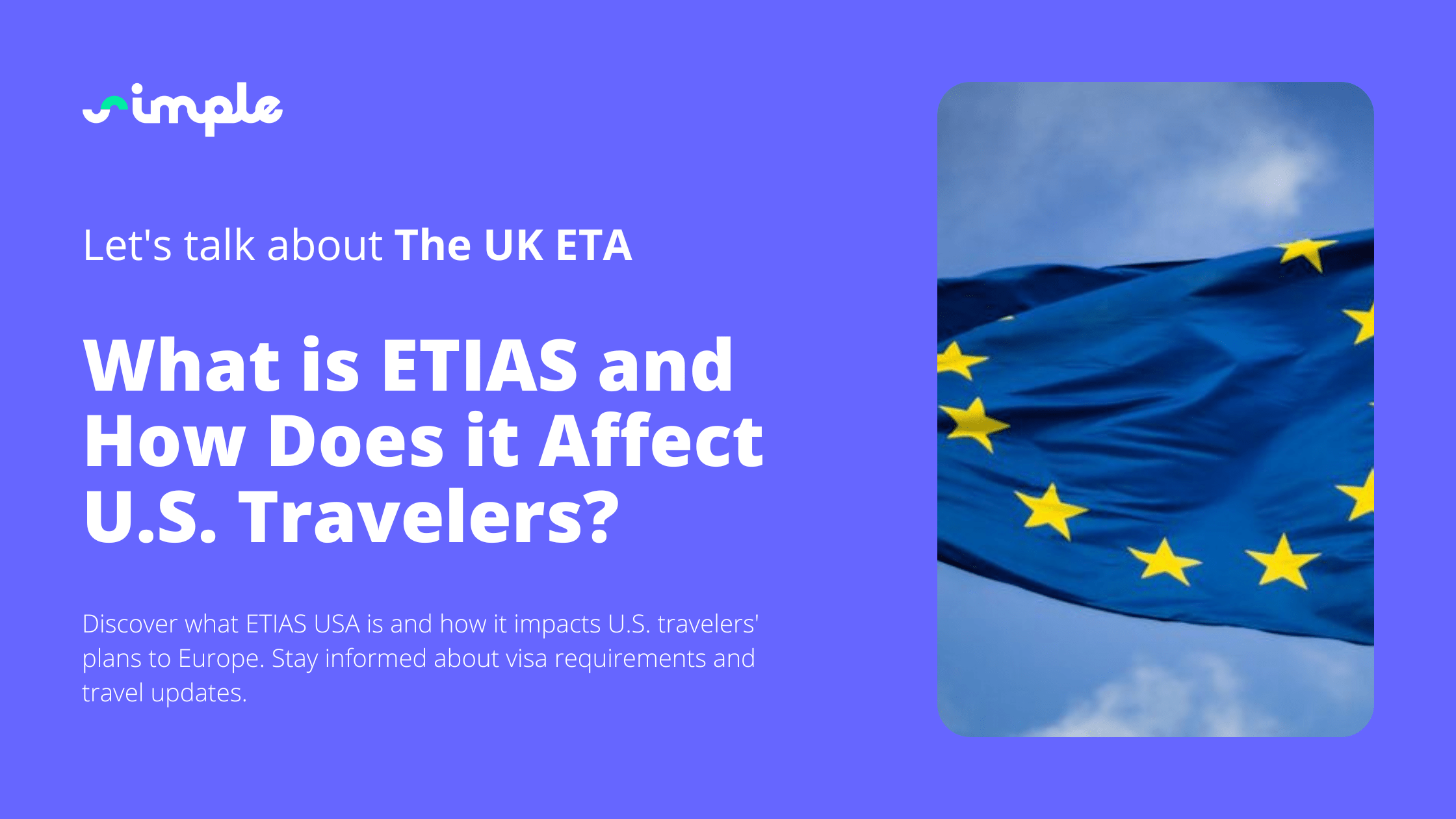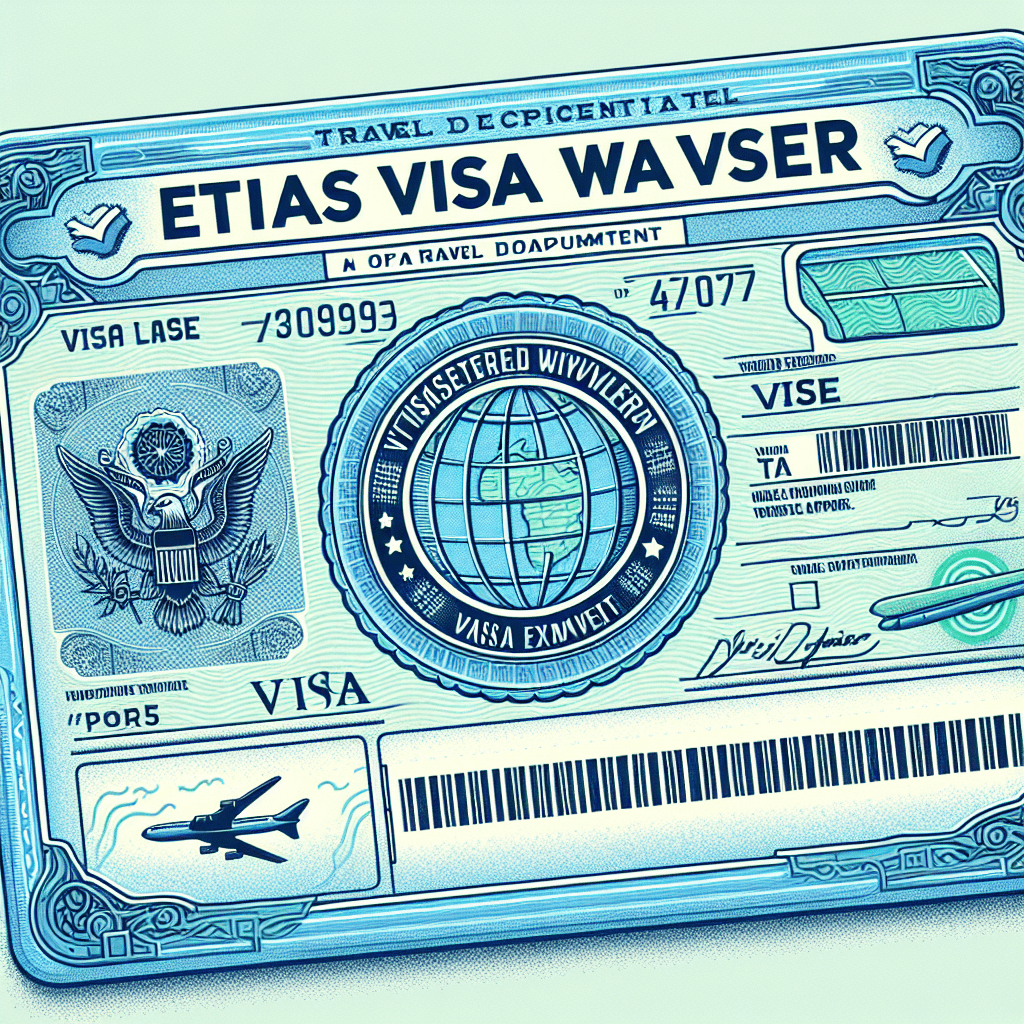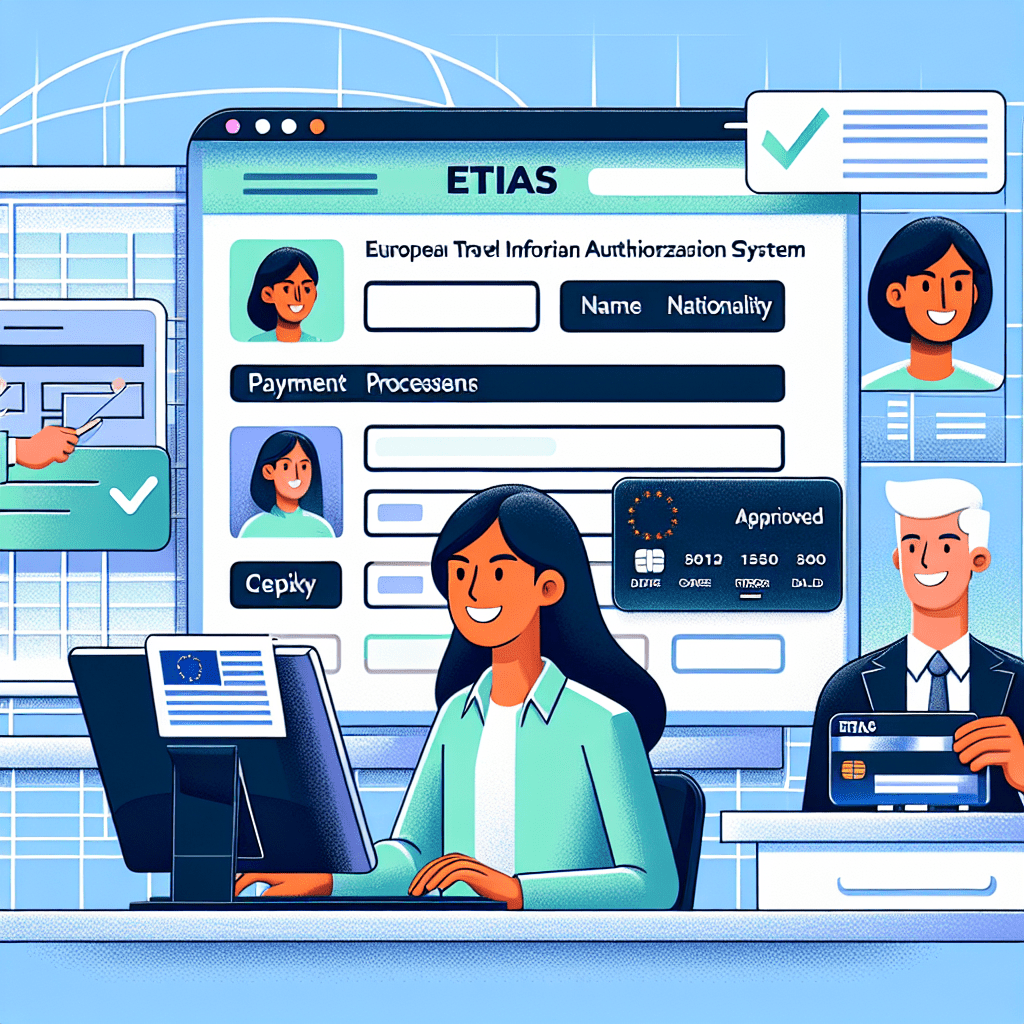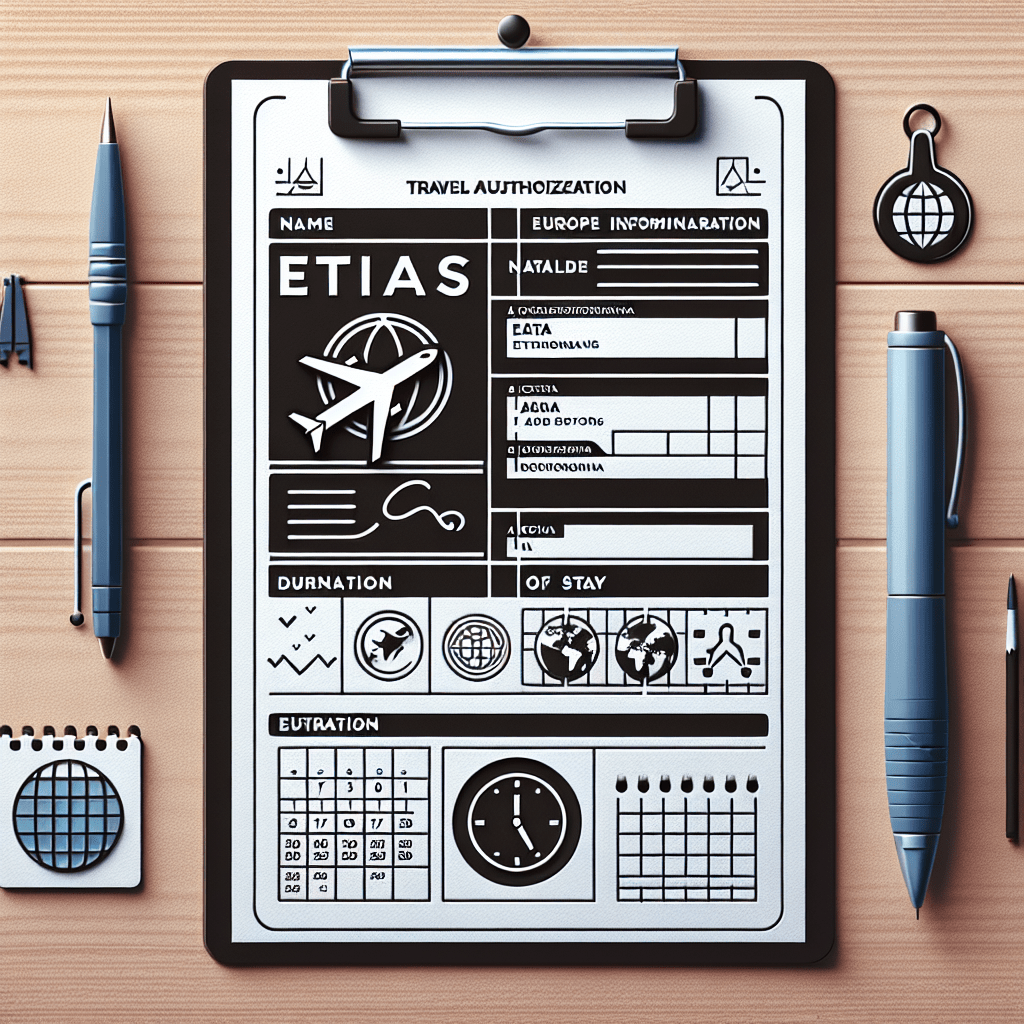What is ETIAS and How Does it Affect U.S. Travelers?

The European Travel Information and Authorization System (ETIAS) is a new travel requirement set to impact U.S. travelers visiting Europe. Designed to enhance security and streamline entry into the Schengen Area, ETIAS is a visa waiver program that requires eligible travelers to obtain travel authorization before their trip. Understanding ETIAS is crucial for U.S. citizens planning to visit Europe, as it affects the ease and legality of their travel. ETIAS aims to improve border management and security by pre-screening travelers from visa-exempt countries, including the United States. This system is part of the European Union’s broader efforts to strengthen its external borders and ensure safe travel for all. With the implementation of ETIAS, U.S. travelers will need to complete an online application and receive approval before embarking on their European adventures. As the launch of ETIAS approaches, it is essential for U.S. citizens to familiarize themselves with the new requirements and prepare accordingly. The changes brought by ETIAS will affect how Americans plan their trips to Europe, making it vital to stay informed and compliant. For more detailed information on ETIAS and its implications for U.S. travelers, visit the [ETIAS USA](https://simplevisa.com) page.

Understanding ETIAS
Definition and Origin of ETIAS
The European Travel Information and Authorization System (ETIAS) is a pivotal development in the realm of international travel, particularly for those visiting Europe. As a European Union initiative, ETIAS is a travel authorization system designed to enhance security and streamline border control processes. It is not a visa but rather a visa waiver program that allows travelers from visa-exempt countries, such as the United States, to enter the Schengen Area with prior authorization. The primary goal of ETIAS is to bolster security by pre-screening travelers before they arrive at European borders. The origin of ETIAS can be traced back to the European Union’s commitment to improving security measures across its member states. In response to increasing global security concerns, the EU recognized the need for a more robust system to monitor and manage the influx of travelers from non-EU countries. By implementing ETIAS, the EU aims to identify potential security risks before travelers reach European soil, thereby enhancing the safety of both residents and visitors.
Countries Affected by ETIAS
ETIAS is specifically designed for travelers entering the Schengen Area, a zone comprising 27 European countries that have abolished passport and other types of border control at their mutual borders. This area includes popular destinations such as France, Germany, Italy, and Spain, among others. The implementation of ETIAS affects citizens from over 60 countries worldwide, including the United States, Canada, Australia, and Japan, who previously enjoyed visa-free travel to the Schengen Area. The relevance of ETIAS extends beyond the EU, impacting various nations outside Europe. For U.S. travelers, understanding the implications of ETIAS is crucial, as it directly affects their ability to travel to Europe without a traditional visa. The introduction of ETIAS signifies a shift in how the EU manages its external borders, emphasizing the importance of security and efficient border control.
Key Features and Objectives
ETIAS is characterized by several key features and objectives that underscore its importance in modern travel. One of the primary features of ETIAS is its pre-screening process, which requires travelers to complete an ETIAS online application before their trip. This process involves providing personal information, travel details, and answering security-related questions. The information is then cross-checked against various security databases to assess potential risks. The objectives of ETIAS are twofold: to enhance security and simplify border crossing procedures. By pre-screening travelers, ETIAS aims to identify individuals who may pose a security threat, thereby preventing them from entering the Schengen Area. This proactive approach not only protects European citizens but also ensures a safer travel experience for visitors. Additionally, ETIAS simplifies border crossing procedures by reducing the need for extensive checks upon arrival, allowing for a more efficient and seamless entry process. Overall, ETIAS represents a significant advancement in travel security and border management. Its implementation reflects the EU’s commitment to maintaining a secure and welcoming environment for both residents and visitors. As U.S. travelers prepare for their European journeys, understanding the intricacies of ETIAS and its requirements is essential for a smooth and hassle-free travel experience.

ETIAS Requirements for U.S. Travelers
Application Process for ETIAS
The ETIAS application process is a crucial step for U.S. travelers planning to visit Europe. As part of the ETIAS visa waiver program, travelers must complete an ETIAS online application before their departure. This process is designed to be straightforward and user-friendly, ensuring that travelers can easily obtain the necessary travel authorization. To begin, applicants need to provide personal information, including their full name, date of birth, and nationality, as well as details from their ETIAS USA passport. In addition to personal information, the application requires travelers to answer a series of security-related questions. These questions are intended to assess potential risks and ensure the safety of all travelers entering the Schengen Area. Once the application is submitted, it is processed through various security databases to verify the information provided. The expected timeframe for approval is typically within minutes, although some applications may take longer if additional information is required. The ETIAS application process is entirely online, eliminating the need for in-person visits to embassies or consulates. This convenience allows U.S. travelers to complete the process from the comfort of their homes, making it an integral part of modern travel planning. It is essential for travelers to ensure that all information provided is accurate and up-to-date to avoid any delays or complications in obtaining their ETIAS travel authorization.
Associated Costs and Validity
Understanding the associated costs and validity of ETIAS is vital for U.S. travelers. The ETIAS visa waiver requires a nominal fee, which is payable online during the application process. The fee structure is designed to be affordable, ensuring that it does not pose a significant financial burden on travelers. Payment options typically include major credit and debit cards, providing flexibility and convenience for applicants. Once approved, the ETIAS travel authorization is valid for three years or until the traveler’s passport expires, whichever comes first. This extended validity period allows travelers to make multiple trips to the Schengen Area without needing to reapply for ETIAS each time. However, it is important to note that the maximum duration of stay within the Schengen Area is 90 days within a 180-day period. Travelers must adhere to this limit to maintain compliance with ETIAS regulations. In certain circumstances, travelers may need to renew their ETIAS authorization. This is necessary if their passport expires or if there are significant changes to their personal information. The renewal process is similar to the initial application, requiring travelers to submit updated information and pay the applicable fee. Staying informed about the validity and renewal requirements of ETIAS is essential for seamless travel planning.
Impact on Travel Planning
The introduction of ETIAS has a significant impact on travel planning for U.S. citizens. As part of the ETIAS requirements USA, travelers must integrate the application process into their existing travel procedures. This means that obtaining ETIAS travel authorization should be one of the first steps in planning a trip to Europe. Early planning is crucial to ensure that travelers have sufficient time to complete the application and receive approval before their departure. ETIAS also necessitates a shift in how travelers approach their European adventures. With the requirement for pre-authorization, travelers must be more proactive in organizing their trips, taking into account the time needed for the ETIAS application process. This includes ensuring that their ETIAS USA passport is valid for the duration of their stay and that they comply with the 90-day limit within the Schengen Area. By understanding the impact of ETIAS on travel planning, U.S. travelers can better prepare for their journeys to Europe. This preparation includes familiarizing themselves with the ETIAS registration USA process, staying informed about any updates or changes to the system, and ensuring that all travel documents are in order. With careful planning and attention to detail, travelers can enjoy a smooth and enjoyable experience in the Schengen Area.

Effects of ETIAS on the Travel Experience
Positive Implications for Security and Convenience
The implementation of ETIAS brings several positive implications for both security and convenience in international travel. One of the primary benefits is the enhanced security checks that ETIAS provides. By requiring travelers to complete an ETIAS online application, the system allows for thorough pre-screening against various security databases. This proactive approach significantly reduces the risk of potential threats entering the Schengen Area, ensuring a safer environment for both residents and visitors. In addition to bolstering security, ETIAS streamlines the travel experience by minimizing border hassles. With the ETIAS travel authorization in place, travelers can expect a more efficient entry process at European borders. The pre-authorization eliminates the need for extensive checks upon arrival, allowing for quicker and smoother passage through border control. This convenience is particularly beneficial for frequent travelers and those on tight schedules, as it reduces wait times and enhances the overall travel experience. The introduction of ETIAS also aligns with the broader trend of digitalization in travel, offering a modern and efficient solution for managing international travel. By leveraging technology, ETIAS simplifies the process of obtaining travel authorization, making it more accessible and user-friendly for U.S. travelers. This shift towards digital solutions reflects the evolving landscape of global travel, where security and convenience are paramount.
Potential Challenges Travelers Might Face
While ETIAS offers numerous benefits, travelers may also encounter certain challenges as they adjust to the new system. One potential challenge is the need to adapt to the new processes and requirements associated with ETIAS. For many travelers, especially those accustomed to visa-free travel, the introduction of a travel authorization system may require a shift in how they plan and organize their trips. Understanding the ETIAS requirements USA and ensuring compliance is essential to avoid any disruptions to travel plans. Another challenge that travelers might face is the possibility of delays in the ETIAS application process. Although most applications are processed quickly, some may require additional time for verification, particularly if there are discrepancies or incomplete information. To mitigate potential delays, travelers are encouraged to apply for ETIAS well in advance of their planned departure date. This proactive approach allows for any unforeseen issues to be resolved without impacting travel schedules. Additionally, travelers should be aware of the importance of maintaining accurate and up-to-date information in their ETIAS application. Any changes to personal details, such as a new passport or changes in travel plans, may necessitate an update to the ETIAS travel document. Staying informed and prepared can help travelers navigate these challenges and ensure a smooth travel experience.
Comparison with Other Travel Authorization Systems
ETIAS shares similarities with other travel authorization systems, such as the Electronic System for Travel Authorization (ESTA) used by the United States. Both systems are designed to enhance security by pre-screening travelers from visa-exempt countries. Like ETIAS, ESTA requires travelers to complete an online application and receive approval before their trip. This similarity highlights a growing trend among countries to implement digital travel authorization systems as a means of managing international travel. Despite these similarities, ETIAS also has unique elements that distinguish it from other frameworks. One notable difference is the scope of ETIAS, which applies specifically to the Schengen Area and involves multiple European countries. This multi-country approach requires a coordinated effort among EU member states to ensure the system’s effectiveness and consistency. Additionally, the ETIAS visa waiver is valid for a longer period compared to some other systems, offering greater flexibility for travelers planning multiple trips to Europe. Overall, ETIAS represents a significant advancement in travel authorization, combining the best practices of existing systems with innovative features tailored to the needs of the European Union. By understanding the nuances of ETIAS and its impact on the travel experience, U.S. travelers can better prepare for their journeys and enjoy the benefits of a secure and convenient travel environment.

Conclusion
Being informed about ETIAS is of paramount importance for U.S. travelers planning to visit Europe. As the European Travel Information and Authorization System becomes a mandatory requirement, understanding its intricacies ensures a seamless travel experience. ETIAS is not merely a bureaucratic hurdle; it is a vital component of modern travel that enhances security and facilitates smoother border crossings. By familiarizing themselves with the ETIAS application process, requirements, and associated costs, travelers can avoid potential pitfalls and ensure compliance with European Union regulations. The significance of being informed extends beyond individual convenience. It contributes to the broader goal of maintaining a secure and efficient travel environment for all. As global travel continues to evolve, systems like ETIAS play a crucial role in safeguarding borders while promoting international mobility. For U.S. citizens, staying updated on ETIAS developments and requirements is an essential part of responsible travel planning. This knowledge empowers travelers to make informed decisions, ensuring that their European adventures are both enjoyable and compliant with the latest regulations. Travelers are encouraged to prepare and adapt to the changes brought by ETIAS. Early preparation is key to navigating the new travel landscape effectively. By integrating the ETIAS application into their travel planning, U.S. travelers can ensure that they have ample time to complete the process and address any potential issues. This proactive approach minimizes the risk of delays and disruptions, allowing for a more relaxed and enjoyable travel experience. Adapting to ETIAS also involves embracing the digitalization of travel processes. As technology continues to shape the way we travel, systems like ETIAS represent a shift towards more efficient and secure methods of managing international travel. By embracing these changes, travelers can benefit from the convenience and security that digital solutions offer. Ultimately, being prepared and adaptable ensures that U.S. travelers can continue to explore the rich cultural and historical landscapes of Europe with confidence and peace of mind.